Letters of Light
The Power And Essence Of TheAlef-Beis
In The Light Of Kabbalah And Chassidus
Letters of Light
By Rabbi Aaron L.Raskin
Published by Sichos InEnglish at Smashwords
Copyright 2003 Sichos InEnglish
****
Thisebook is licensed for your personal enjoyment only. This ebook maynot be re-sold or given away to other people. If you would like toshare this book with another person, please purchase an additionalcopy for each recipient. If youre reading this book and did notpurchase it, or it was not purchased for your use only, then pleasereturn to Smashwords.com and purchase your own copy. Thank you forrespecting the hard work of this author.
****
788 Eastern Parkway -Brooklyn, N.Y. 11213 - 718-778-5436
****
ISBN 978-1-4659-2244-1
Chapter 1: Introduction
There are an estimated3,000 languages (not counting dialects) and more than 66,000letters which make up the alphabets for these languages. Only onelanguage and one alphabet is Divinely created, the letters havingbeen formed and shaped by G-d alone. That language is Lashon HaKodesh , biblicalHebrew.
It is no wonder, then, thatthe Hebrew letters are multifaceted. The letters of the Hebrewalphabet, the alef-beis , are so rich with meaning that even Judaisms greatestscholars had to engage in lengthy study to understand why G-d madethem as He did. Traditionally, Hebrew letters possess:
1) Design the specific way each letter isformed. This form represents the Divine energy within eachletter.
2) Gematria each of the letters ofthe alef-beis represents a certain number, e.g., alef = 1, beis = 2, etc.
3) Meaning each letter has many meanings,e.g., the letter alef stands for chief, to learn, wondrous, and much more. Beis means house,etc.
4) Nekudos ( vowels )most letters have a vowel thattells us how it is to be pronounced.
5) Crowns some letters in the Torah havecrownslittle lines drawn on the top of Hebrew letterswhich addstrength to the letters, e.g.  . Rabbi Akiva was famousfor his expositions upon them. The crowns have their own specialmeanings beyond the scope of this work.
. Rabbi Akiva was famousfor his expositions upon them. The crowns have their own specialmeanings beyond the scope of this work.
6) Cantillation each word in the Torahhas a musical note.
In this book we will dealwith the first four topics. The rest we will leave for another timeand another book.
For grammatical reasons,certain Hebrew letters have two different pronunciations(e.g., beis and veis , kaf and chaf , pei and fei , shin and sin , tav and sav ) asyou will find throughout this book. Regardless of its pronunciationin a particular word, we will call the letter by its principal name(e.g., beis, kaf, pei , etc.)
It is important to notethat many words in Hebrew, as in all Semitic languages,though theysound phonetically differentshare the same root and therefore areinterrelated. For example, alef , aluf and ulfana all share the same common rootof alef , lamed and pei , and so their meaningsare connected.
Also, according to Kabbalah , when the sameletters are transposed to form different words, they retain thecommon energy of their shared gematria . Because of this, the wordsmaintain a connection in the different forms. We find a classicexample of this with the words hatzar (troubles), ratzah (a desire to run passionatelyinto the ark of Torah and prayer) and tzohar (a light that shines fromwithin). All three words share the same three letters: tzaddik, reish and hei in differentcombinations. The Baal Shem Tov explains the connection between the words as follows: Whenone is experiencing troubles ( hatzar ), and one runs to study Torahand pray with great desire ( ratzah ), one is illuminated with aG-dly light from within ( tzohar ) that helps him transform histroubles into blessings.
Because a Hebrew letterradiates light, insight and clarity, it is called an os , connected to thepassage asa boker morning will come. Assuch, we have chosen to call our book Letters of Light the light of wisdomand understanding which emanates from the letters of theTorah.
Energy In TheLetters
In addition to the light inthe letters written on printed matter (e.g., the letters in a Torahscroll), there is intrinsic light within each letter independent ofit being written down on paper. These are the letters ofCreation.
The Mishnah states: With Ten Utterances G-d created theworld.
As a carpenter employstools to build a home, so G-d utilized the twenty-twoletters of the alef-beis to form heaven and earth. They are the metaphorical wood,stone and nails, cornerposts and crossbeams of our earthly andspiritual existence.
G-d created the alef-beis before thecreation of the world. The Maggid ofMezritch explains this on the basis of the first verse in the Bookof Genesis : Bereishis bara Elokim es hashamayim veshaaretz In the beginning G-d created theheavens and the earth. The word es is spelled with an alef , the first letter of the alef-beis , and a tav , which is the last.The fact is, es , isgenerally considered to be a superfluous word. There is no literaltranslation for it, and its function is primarily as a grammaticaldevice. So why is es present twice in the very first line of the Torah? It suggests that in thebeginning, it was not the heavens and the earth that were createdfirst. It was literally the alef-beis , alef through tav . Without these letters, the veryUtterances with which G-d formed the universe would have beenimpossible.
Furthermore, Rabbi YisraelBaal Shem Tov explains the verse: Forever the words of G-d arehanging in the heavens. The crucial thing to realize is that G-ddid not merely create the world once. His words didnt just emergeand then evaporate. Rather, G-d continues to create the world aneweach and every moment. His words are there constantly, hanging inthe heavens. And the alef-beis is the foundation of this ongoing process ofcreation.
The Lubavitcher Rebbe,Rabbi Menachem M. Schneerson, explains that the source of thetwenty-two letters is even higher than that of the TenCommandments. As it states: With you (the essence ofG-d), the Jews will be blessed. Bach means with you. The beis (which has a gematria of 2) andthe kaf (= 20)added together equals 22. Through the twenty-two letters ofthe alef-beis , theJewish people are connected to G-d and receive all of theirblessings.
Essence Of ThisWork
The essence of thisworkthat which makes it both unique and weaves everythingtogetherare the teachings of my holy teacher, the LubavitcherRebbe, Rabbi Menachem Mendel Schneerson, whom we will addressthroughout this book as simply the Rebbe. It is my sincere hopethat the ideas conveyed herein have neither diluted normisconstrued the Rebbes true intention.
Acknowledgments
Blessed are You G-d, ourL-rd, King of the universe, Who has given us life, sustained us andallowed us to reach this auspicious occasion.
To my wife, Shternieyouare a beacon of strength, wisdom and love. To my children Yankel,Eliyahu, Mendy, Chaya and Yehoshua Elimelech, you are my pride andjoy.
Words cannot adequatelyexpress my gratitude to my parents, Reb BenZion and Bassie Raskin,for giving of themselves beyond the call of duty and for giving meeverything a son could ask for; to my wifes parents, Rabbi Shmueland Devorah Plotkin (Spiritual Leaders of Zhitomer and Berditchev),for their encouragement and inspiration; and to my grandmother,Rebbetzin Chava Hecht, for her unconditional love anddirectives.
To my dear late grandfatherRabbi Jacob J. Hecht, o.b.m., whose remarkable vision continues toguide me through life.
I am grateful to everyonewho helped make this book a reality. To Rabbi Yonah Avtzon, thepublisher of Sichos In English, and Yosef Yitzchok Turner forlayout and design. To my editors, Erik Anjou, who gave not only ofhis pen but also of his heart toward the success of this volume,and to Rochel Chana Schilder, whose wisdom, insights and tirelessefforts brought much clarity to the text. To Rabbi Michoel Seligsonfor citing sources and reviewing the book. A special thanks toShoshana Brombacher Miller for her beautiful artistic renderings,and to Shlomo Khayms for a great job on the coverdesign.
Next page
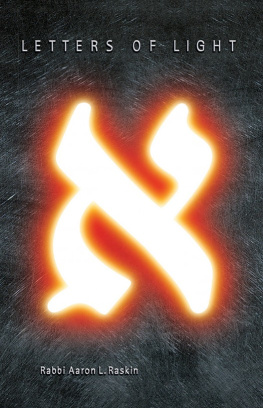

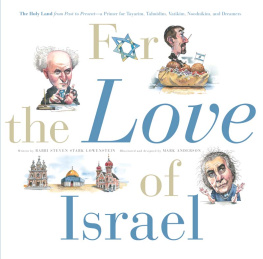
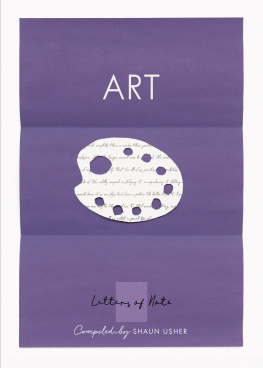

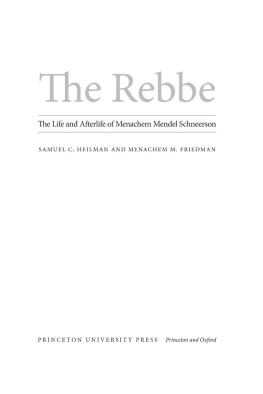
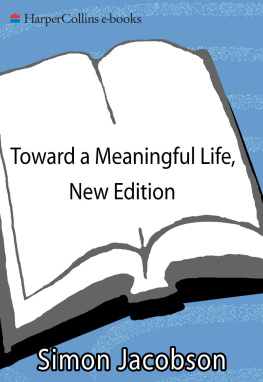


 . Rabbi Akiva was famousfor his expositions upon them. The crowns have their own specialmeanings beyond the scope of this work.
. Rabbi Akiva was famousfor his expositions upon them. The crowns have their own specialmeanings beyond the scope of this work.